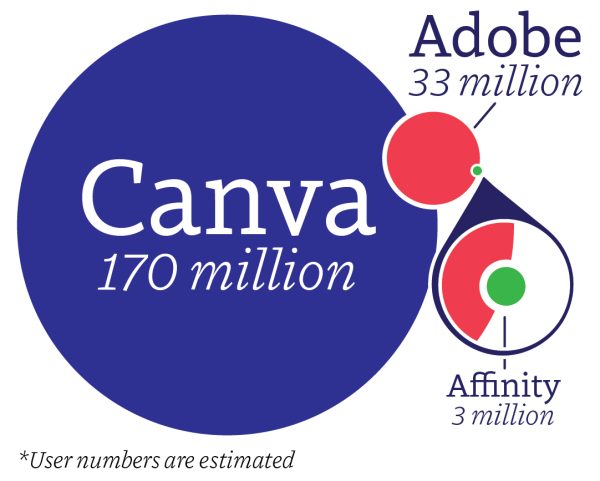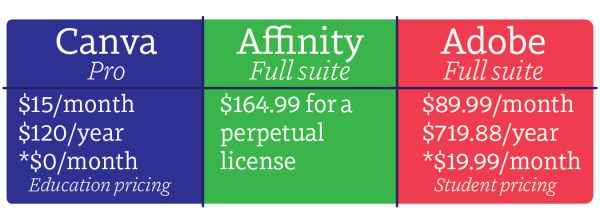Adobe’s creative software was considered the industry standard for decades, but that could change. Canva, the popular novice-friendly design platform known for its templates and stock graphics, acquired another powerful Adobe competitor: Affinity.

Canva succeeded through affordability and ease of use, making complex design, video and animation tools accessible to everyday users. It has over 170 million monthly users, while Adobe has about 33 million and Affinity has 3 million.
But while Canva is popular, its limitations have restricted its use among professionals.
Shawn Dryden, principal and co-owner of New Boston Creative Group and K-State alumni, said Canva is an effective tool for content on fast-paced platforms.
“We use [Canva] quite a bit for social things: creating templates for Facebook, Instagram and other social platforms that not only we can use, but we’ll also set up templates for the clients to be able to use so that we can turn those over and they can run them themselves, which is really nice,” Dryden said. “You always run up against some sort of limitation because [Canva] can only do so much within their platform … and then you have to shift into something else that lets you have more control.”
Ashley Hewson, CEO of Affinity, said in a press release Canva’s acquisition of Affinity aims to eliminate those limitations, bringing professional tools across both platforms.
“We’ve worked tirelessly to challenge the status quo, delivering professional-grade creative software that is both accessible and affordable,” Hewson said. “Canva’s commitment to empowering everyone to create aligns perfectly with those values.”
According to its website, Affinity is creating a new industry standard for graphics software and is used by professionals looking to create high-quality designs.
While Affinity doesn’t offer animation, video production or UI/UX design programs, it provides alternatives to Adobe’s Photoshop, Illustrator and InDesign, especially in terms of affordability.
According to its website, Adobe Creative Cloud for all apps cost $89.99 monthly for standard business users, $19.99 monthly for students and teachers their first year and $29.99 monthly afterward.
Canva launched a subscription service in 2015 to unlock premium features. A Canva Pro subscription cost $15 monthly.

Aviyah Pepperstone, sophomore in industrial and product design, said Canva became less user-friendly since Canva Pro subscriptions were introduced.
“When I started using [Canva] six years ago … it had fewer images, colors and textures to work with,” Pepperstone said.
Pepperstone compared the Canva Pro subscription to Webkinz, an online Toy-to-Life game.
“You could have a cat or dog for free, and there were like 10 games and 10 outfits that you couldn’t have, couldn’t play with,” Pepperstone said. “All the good ones, now, you can’t have them unless you pay.”
Pepperstone said Canva’s acquisition of Affinity could create equitable and affordable access to powerful design tools as long as Affinity’s quality stays the same.
“I’m excited that maybe Canva will be more useful because the base level is still free,” Pepperstone said. “I’m excited that maybe they’re going to expand into a more useful and powerful tool. I am nervous for what they’re going to do to [Affinity].”
While platforms like Adobe, Affinity and Canva offer creative tools to anyone from novices to professionals, Adobe offers more flexibility and control for experienced designers.
“[Adobe] was too integral in creating what we have now,” Pepperstone said. “I don’t think you’re ever going to see it go away.”






















































































































